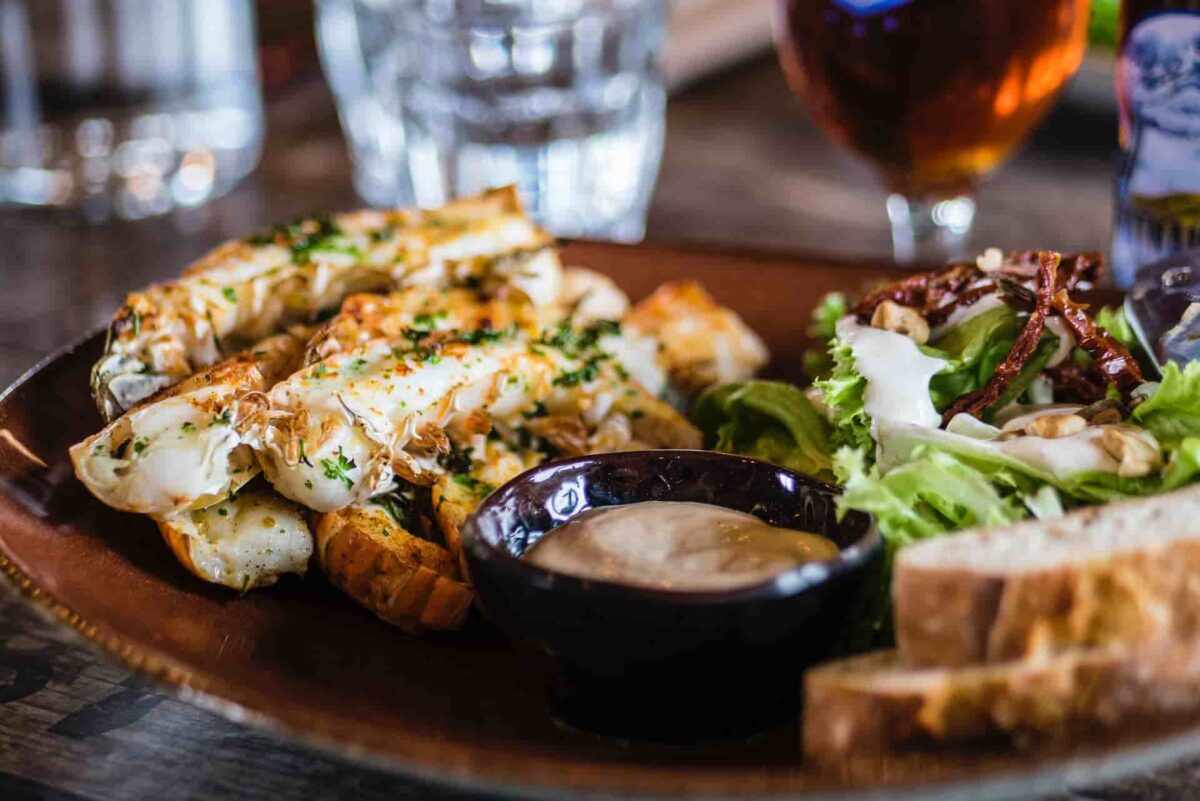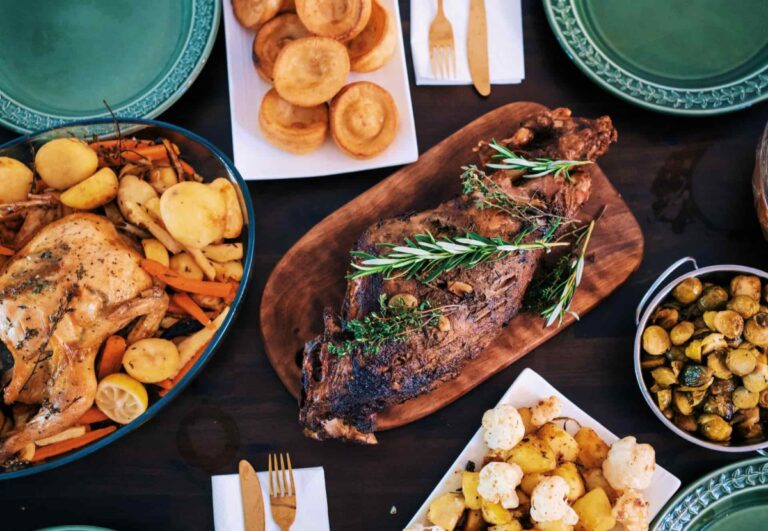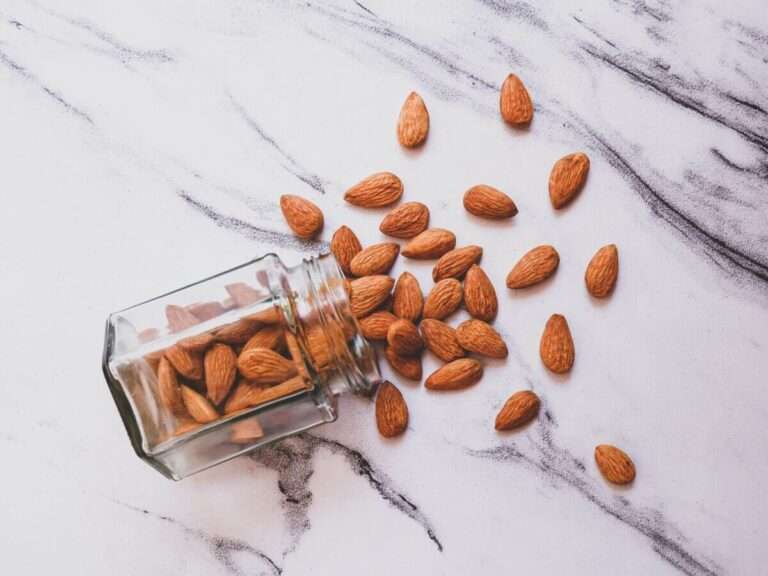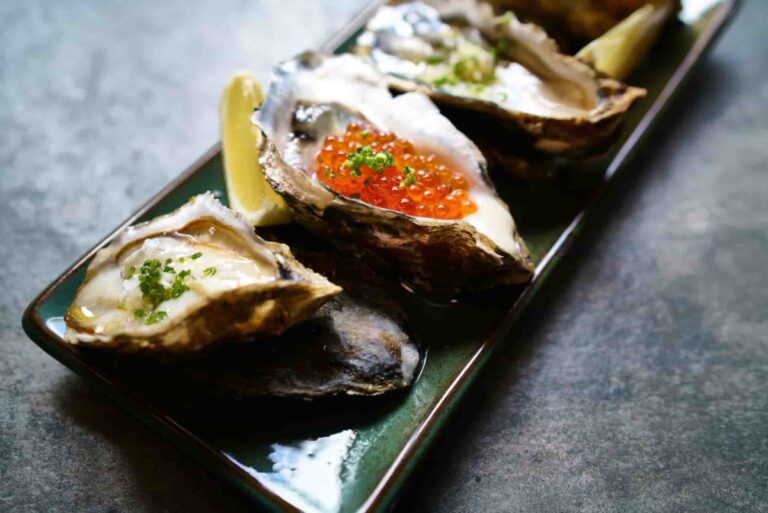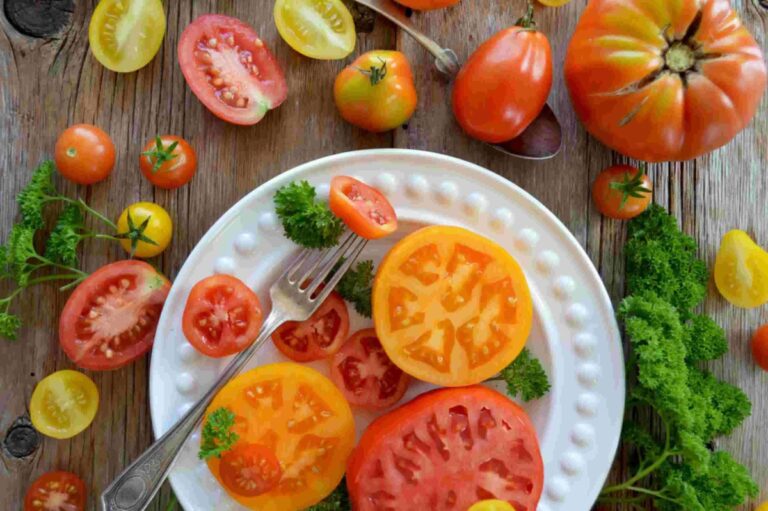35 top horseradish kitchen insights for you
Did you know that horseradish is the primary flavouring or ingredient in more than 95% of the wasabi served at sushi restaurants?
- This combination of horseradish, mustard, corn starch, and other ingredients, including green food colouring, is mainly notable for the horseradish that it contains. This suggests that the great majority of people who claim to be acquainted with wasabi have never really had it in any form.
- In the 1590s, the term “horseradish” was first documented in the English language. As with the term ‘radish,’ it is thought that the word ‘horse’ was formerly used metaphorically to mean’strong’ owing to the fact that the two words have the same source.
- It is typical to characterise the flavour of horseradish root as being hot, spicy, or peppery. This root also boasts a powerful flavour. The powerful spiciness of horseradish is sensed via the nose and sinuses, in contrast to the burning sensation that is caused by hot peppers. This vegetable is famous for the fiery and spicy fleshy root that it produces; this root may be used to make a condiment or a table relish.
- The traditional accompaniment of roasted pork in Europe is a horseradish sauce that is prepared by combining grated horseradish root with vinegar. This condiment is quite popular in Europe. Where in the United States, grated horseradish is often blended with mayonnaise or salad dressing and referred to as “horseradish sauce.”
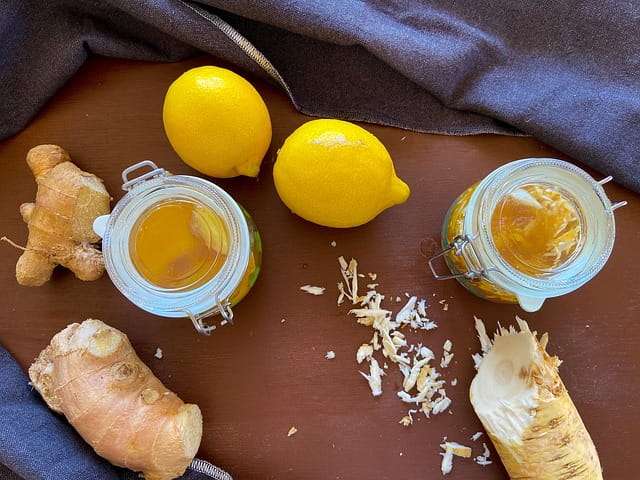
Horseradish nutrition values and health benefits
- Due to the fact that horseradish is often ingested in very small amounts, a typical serving has an incredibly low number of calories but still including a wide array of minerals and plant compounds. In addition to this, it has negligible quantities of minerals such as calcium, potassium, magnesium, and folate, all of which are useful in their own right.
- This spicy vegetable also has a high concentration of helpful plant compounds, such as glucosinolates. When these glucosinolates are broken down, they become isothiocyanates, which have been shown to protect against cancer, infections, and some forms of mental sickness.
- It is thought that the presence of glutcosinolates and isothiocyanates in this root vegetable may help to prevent cancer by inhibiting the growth of cancer cells and promoting their death. This is done by reducing the rate at which cancer cells reproduce. Some of the components of horseradish, such as sinigrin, have the ability to act as antioxidants, therefore limiting the damage to cells produced by free radicals and aiding the regeneration of damaged cells.
- It is possible that your risk of acquiring diseases such as cancer is increased when the concentrations of these reactive chemicals that are present in your body reach an excessive level. In addition, this root contains an enzyme known as peroxidase, which plays an important role in the activation and improvement of a powerful anticancer medicine. This drug particularly targets human pancreatic cancer cell lines.
- After eating horseradish, some people report experiencing a burning sensation in their sinuses, nose, and throat. This is a common side effect of horseradish. It is often used for the purpose of alleviating the symptoms of colds and other respiratory disorders. According to these results, horseradish may be advantageous for respiratory health; however, more research is necessary to confirm this conclusion.
- There is a paucity of data available about the possible negative effects of consuming an excessive quantity of horseradish, either via your diet or as a dietary supplement. In spite of this, given that horseradish has such a strong flavour, it is generally best to use it in just small quantities. If you consume a significant quantity of this pungent root, you may get discomfort in your mouth, nose, and stomach.
- Patients who suffer from stomach ulcers, digestive issues, or inflammatory bowel disease may find that it is especially painful (IBD). In conclusion, it is not known whether or not consuming significant amounts of horseradish is dangerous for children or for women who are pregnant or nursing.
- Instead of being used as a seasoning, horseradish is most often seen in the form of a condiment. When using dietary supplements, it is important to do so under the direction of a qualified medical professional.
- Burning in the mouth, nose, throat, and stomach may occur, along with profuse perspiration, dry heaving or vomiting, and diarrhoea at high dosages. In addition, the root’s volatile oils might irritate your respiratory system and cause a rash if you breathe them in while grating. If you think you have a horseradish allergy, you should see a doctor right away.
- If you have renal problems, you may want to see a doctor before adding horseradish to your diet on a regular basis since it may increase your need to urinate. Horseradish may induce stomach upset in children under the age of 4, so parents keep your kids away from it.
- There are no documented significant drug interactions between horseradish and any other substance. However, before taking horseradish for therapeutic purposes, it is best to consult with a doctor to make sure it is safe for you to do so.
100g of horseradish has 48 calories (201kj), 1.2g protein, 0.6g fat, and 11.5g carbs, including 3.3g fibre.
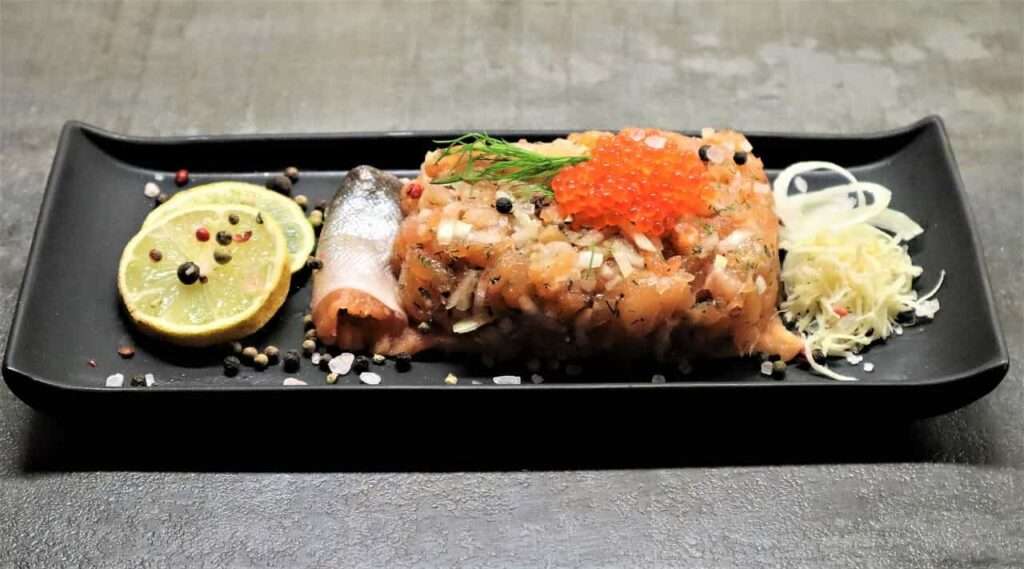
How to store horseradish and how to buy them
- The fresh roots are often sold in pieces that are around 2 inches long and may be found in the vegetable section of most supermarkets as well as specialised food shops. When shopping for horseradish roots, it is important to search for those that are firm rather than mushy. At no point in time should either mould or green spots be seen on the roots of the plant. It is also not advisable to use roots that have a dried out or shrivelled appearance.
- Horseradish in a bottle that has already been made may be found in the section of supermarkets that is dedicated to condiments that is kept cold. After being prepared, horseradish is preserved by soaking it in vinegar and salt. In order to make the red variety, the juice extracted from beetroots is needed. Additionally, dried horseradish may be purchased from a number of other types of markets. Before being put to use, powdered components like Japanese wasabi powder need to be reconstituted with water or another liquid of your choice.
- The horseradish root should remain unwashed and sealed in a plastic bag until it is time to use it. This should be done and placed in the vegetable drawer of the refrigerator. Use freshly chopped basil as quickly as possible after it has been prepared to get the maximum flavour from the herb. If you purchase it at the market, it will taste the finest if you use it within a week or two after purchasing it. After being sliced or grated, it should be eaten within a few days, unless it has been kept in vinegar. If it has been preserved in vinegar, it may last for weeks.
- Made horseradish may be stored in the refrigerator for up to three months after it has been prepared. However, it quickly loses its pungent quality, so the optimal time to use it is between three and four weeks after the jar has been opened. When it reaches the point when its colour begins to change to black, you need to get rid of it. Horseradish that has already been made should not be frozen, since this will ruin the flavour.
- On the other hand, you may keep horseradish that is still fresh in the freezer for up to half a year. Consider flash-freezing it by the spoonful in ice trays or on waxed paper, and then storing it in a plastic bag that is safe for the freezer so that it will stay fresher for a longer period of time. It is important to keep in mind that the plant loses some of its pungent qualities when it is frozen.
- Horseradish sauce will often have a “best if used by” date printed on the bottle. The number of years indicated by that date is the amount of time throughout which it is expected to remain fresh. There is no reason to believe that it would get spoiled the next day or anything like that. In most cases, it should still be safe to consume and of high quality for at least a few months after the expiration date has passed. After being removed from its packaging, the quality of the sauce begins to deteriorate over time. If you want the wine to be of the highest possible quality, you should aim to complete the bottle within one to two months.
- How to identify whether horseradish is spoiled in the following ways:
- It is not hard at all to determine whether or not the fresh horseradish root you purchased has gone bad. Throw away anything that has mould on it. The same thing should be done if it smells off or feels soft and mushy.
- You may remove any minute black specks that are on it by cutting them out. On the other hand, huge black spots on the vegetable are an unmistakable indication that it is beyond its prime and should be thrown away.
- When it comes to utilising the root, it is very much now or never if you see that it is starting to become softer. If you wait too long, it may become too soft to use.
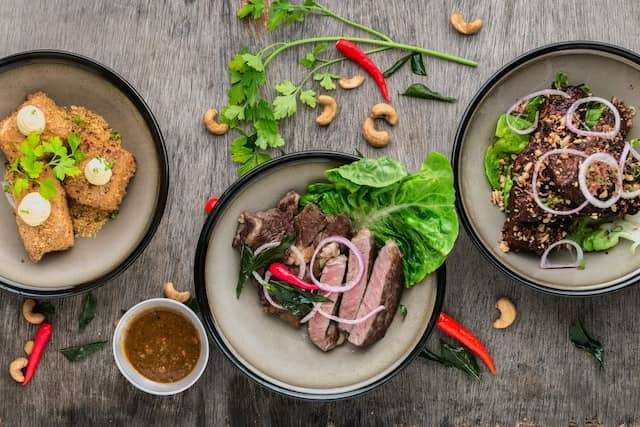
Cooking techniques, secrets, and tips from the kitchen
- To get it ready to use, just follow the same procedures as you would with fresh ginger while cooking.
- You may use a vegetable peeler to remove the papery skin off the top layer of the section you will be using.
- As quickly as possible, grate it, either coarsely or finely, depending on the recipe.
- Using the sides of a cheese grater or box grater with wider holes, as seen in the photo, will provide larger, coarser chunks.
- To get even smaller and uniformly shaped bits, you may use a microplane or graters with tiny holes on the sides.
- The shredded product will turn brown very quickly if it is left out.
- Immediately after grating it, add a few drops of lemon juice to keep the bright white colour from fading, much as you would with sliced apples. Mix thoroughly.
- If you want to add some flavour to this simple dish, you may either use pure grated root or combine it with sour cream or crème fraiche for a more subtle flavour. Mixing even a little amount of this peppery root with tangy dairy products like yoghurt, crème fraiche, or sour cream brightens the flavour of a wide variety of creamy dishes. Try your hand at making some handmade creamy soups with it. The flavour of this lively root vegetable is enhanced with the addition of potatoes, beets, peas, broccoli, or leeks.
- Although devilled eggs have been served at Easter dinners and church picnics for decades, their popularity is on the increase. These filled eggs are more often seen on the brunch menus of premium places, such as bars, cafes, and barbecue joints. The use of horseradish gives the yolk mixture a spicy kick and helps to warm the tongue. It is a certain way to boost repeat business. Furthermore, they are just 100 calories in a whole serving size of two pieces.
- Adding horseradish to a slaw made with broccoli and apples is a delicious way to sneak it into your dinner. Prepared horseradish adds a spicy bite to the already sour mixture of vinegar and mayonnaise. Instead of using conventional shredded cabbage, try broccoli slaw for its extended freshness and increased satiety. It can sit and soak up flavours without being mushy or watery. Honeycrisp or Gala apples, which are sweeter, might be used instead of the tart green crisp, which goes well with traditional slaw.
- The classic vinaigrette made with oil and vinegar is the best option for a quick and easy weekday meal. It can be made in a flash with no effort and can be customised in many ways. However, if you do not have any fresh horseradish on hand, or if you simply like things a bit hotter, you can add to your simple vinaigrette. It is great as a fast and simple substitute for a traditional salad dressing when poured over steamed or roasted vegetables as a side dish.
- As for the main meal, salmon with potatoes and horseradish sauce is a tasty option. It is hard to go wrong with salmon and sour cream, especially when the sauce is seasoned with dill and horseradish. Serve with a side of steamed broccoli or cauliflower and fill up the dish with steamed asparagus, haricots verts (slim French green beans), slightly wilted spinach, Swiss chard and your cooking choice of potatoes ( we recommend boiled potato or mash potato).
- Do not forget about the British Sunday roast and the widespread usage of horseradish sauce on meat wherever it is available when discussing horseradish. While prepared horseradish is OK, I highly recommend using fresh horseradish root, which can be obtained in the vegetable section of your local grocery store in the fall and winter. The quantity of horseradish, pepper, and lemon used may be altered to change the sauce’s heat and sourness. Any cold roast beef left from main super, can be use next day in sandwiches accompanied with the same horseradish sauce.
- As was said before, horseradish goes well with a wide range of meals and flavours, including mayonnaise, sour cream, potato, beets, fish or steak, and fresh herbs like dill and chive, to name just a few examples.
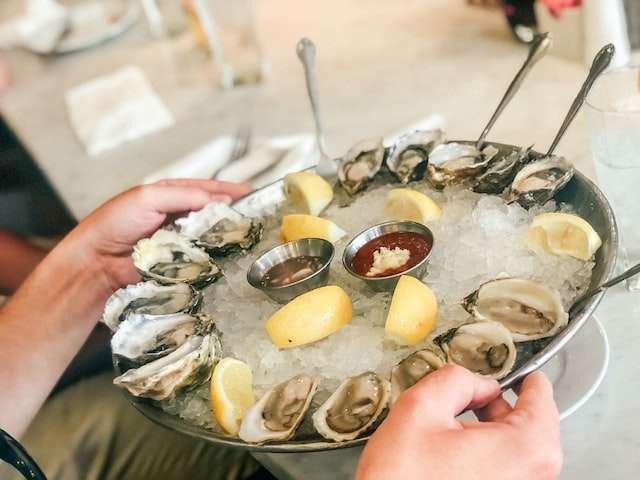
History of horseradish from the beginning until today
- This 3,000-year-old plant is used as a bitter herb for Passover Seders and a savoury complement to meat, chicken, and seafood. Horseradish has been valued for centuries for its medicinal and gastronomic benefits.
- Egyptians knew about horseradish about 1500 B.C. According to the encyclopaedia, early Greeks used it as a back massage and aphrodisiac. Jews still utilise it during Passover Seders. Some felt the syrup may cure rheumatism and TB. Legend has it. The Delphic oracle told Apollo that horseradish is worth its weight in gold.
- Central Europe is believed to be the origins of current horseradish appreciation and the origin of its name. Germans call it “meerrettich” (sea radish) since it grows near the water. Many believe the English mispronounced the German word “meer” to create “mareradish.” “Horse” in “horseradish” refers to the dish’s size and coarseness. “Radish” comes from the Latin root radix.
- During the Renaissance, horseradish was consumed in Central Europe, Scandinavia, and England.
- By the 16th century, all Englishmen ate horseradish with meat and oysters. Innkeepers and coach stop attendants grew the pungent root to make cordials for exhausted guests. Early immigrants brought horseradish to North America, where they farmed it. By 1840, it had become a weed in the Boston region.
- Eau Claire, Wisconsin, and other adjacent towns later had horseradish producing communities. Homesteaders in Northern California’s Tulelake area grew the root during World Conflict II, and it expanded when the war ended.
- The U.S. produces enough horseradish to encircle the globe 12 times in sandwiches.
